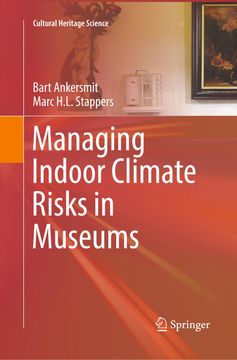Share
Managing Indoor Climate Risks in Museums
Bart Ankersmit
(Author)
·
Marc H. L. Stappers
(Author)
·
Springer
· Paperback
Managing Indoor Climate Risks in Museums - Ankersmit, Bart ; Stappers, Marc H. L.
£ 115.70
£ 128.56
You save: £ 12.86
Choose the list to add your product or create one New List
✓ Product added successfully to the Wishlist.
Go to My WishlistsIt will be shipped from our warehouse between
Tuesday, July 16 and
Wednesday, July 17.
You will receive it anywhere in United Kingdom between 1 and 3 business days after shipment.
Synopsis "Managing Indoor Climate Risks in Museums"
This book elaborates on different aspects of the decision making process concerning the management of climate risk in museums and historic houses. The goal of this publication is to assist collection managers and caretakers by providing information that will allow responsible decisions about the museum indoor climate to be made. The focus is not only on the outcome, but also on the equally important process that leads to that outcome. The different steps contribute significantly to the understanding of the needs of movable and immovable heritage. The decision making process to determine the requirements for the museum indoor climate includes nine steps: Step 1. The process to make a balanced decision starts by clarifying the decision context and evaluating what is important to the decision maker by developing clear objectives. In Step 2 the value of all heritage assets that are affected by the decision are evaluated and the significance of the building and the movable collection is made explicit. Step 3. The climate risks to the moveable collection are assessed. Step 4: Those parts of the building that are considered valuable and susceptible to certain climate conditions are identified. Step 5. The human comfort needs for visitors and staff are expressed. Step 6: To understand the indoor climate, the building physics are explored. Step 7. The climate specifications derived from step 3 to 5 are weighed and for each climate zone the optimal climate conditions are specified. Step 8: Within the value framework established in Step 1, the options to optimize the indoor climate are considered and selected. Step 9: All options to reduce the climate collection risks are evaluated by the objectives established in Step 1.
- 0% (0)
- 0% (0)
- 0% (0)
- 0% (0)
- 0% (0)
All books in our catalog are Original.
The book is written in English.
The binding of this edition is Paperback.
✓ Producto agregado correctamente al carro, Ir a Pagar.

